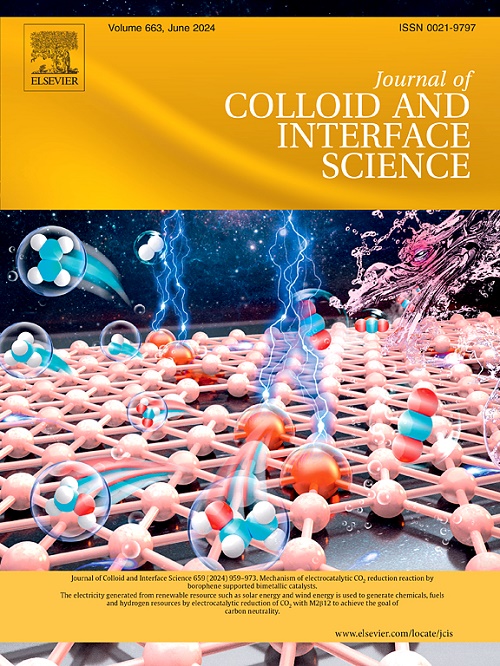Synergistic spatial separation effect of internal electric field in ALD-generated BiFeO3/CuO@Co Z-type heterojunction for enhanced photocatalytic water oxidation
IF 9.4
1区 化学
Q1 CHEMISTRY, PHYSICAL
引用次数: 0
Abstract
Altering the electron distribution within a catalyst to manipulate internal charge migration pathways is an effective strategy for achieving high efficiency in carrier separation and migration, which is essential for the advancement of photocatalytic water oxidation technologies. We have employed atomic layer deposition (ALD) to construct a BiFeO3/CuO (BFO/CuO) heterojunction with a specific CuO thickness, resulting in a Z-type junction (BFO/CuO50) characterized by a robust internal electric field. This junction facilitates the spatial separation of charge carriers, thereby enhancing their migration efficiency. Moreover, we introduced cobalt-based co-catalysts onto the BFO/CuO50 surface, leading to the creation of reactive centers that enrich holes, thus crafting a three-dimensional composite with superior carrier excitation and separation capabilities. The optimized catalyst, denoted as BFO/CuO50@Co0.1%, demonstrated to produce oxygen at a rate of 1.53 mmol g−1 h−1 and remarkable stability. These findings provide the direction for research and design in the domain of photocatalytic oxygen evolution, offering a guidance for the development of complete water-splitting ferroelectric catalysts which enhance the generation and separation of photo-driven charge carriers.

ald生成的BiFeO3/CuO@Co z型异质结内部电场的协同空间分离效应增强光催化水氧化。
改变催化剂内部的电子分布来控制内部电荷迁移路径是实现高效载流子分离和迁移的有效策略,这对于光催化水氧化技术的发展至关重要。我们采用原子层沉积(ALD)技术构建了具有特定CuO厚度的BiFeO3/CuO (BFO/CuO)异质结,得到了具有强大内部电场特征的z型结(BFO/CuO50)。这种结有利于载流子的空间分离,从而提高载流子的迁移效率。此外,我们在BFO/CuO50表面引入了钴基共催化剂,从而产生了丰富孔洞的反应中心,从而制作出具有优越载流子激发和分离能力的三维复合材料。优化后的催化剂BFO/CuO50@Co0.1%的产氧速率为1.53 mmol g-1 h-1,稳定性好。这些发现为光催化析氧领域的研究和设计提供了方向,为开发完全水分解铁电催化剂提供了指导,提高了光驱动载流子的生成和分离。
本文章由计算机程序翻译,如有差异,请以英文原文为准。
求助全文
约1分钟内获得全文
求助全文
来源期刊
CiteScore
16.10
自引率
7.10%
发文量
2568
审稿时长
2 months
期刊介绍:
The Journal of Colloid and Interface Science publishes original research findings on the fundamental principles of colloid and interface science, as well as innovative applications in various fields. The criteria for publication include impact, quality, novelty, and originality.
Emphasis:
The journal emphasizes fundamental scientific innovation within the following categories:
A.Colloidal Materials and Nanomaterials
B.Soft Colloidal and Self-Assembly Systems
C.Adsorption, Catalysis, and Electrochemistry
D.Interfacial Processes, Capillarity, and Wetting
E.Biomaterials and Nanomedicine
F.Energy Conversion and Storage, and Environmental Technologies

 求助内容:
求助内容: 应助结果提醒方式:
应助结果提醒方式:


